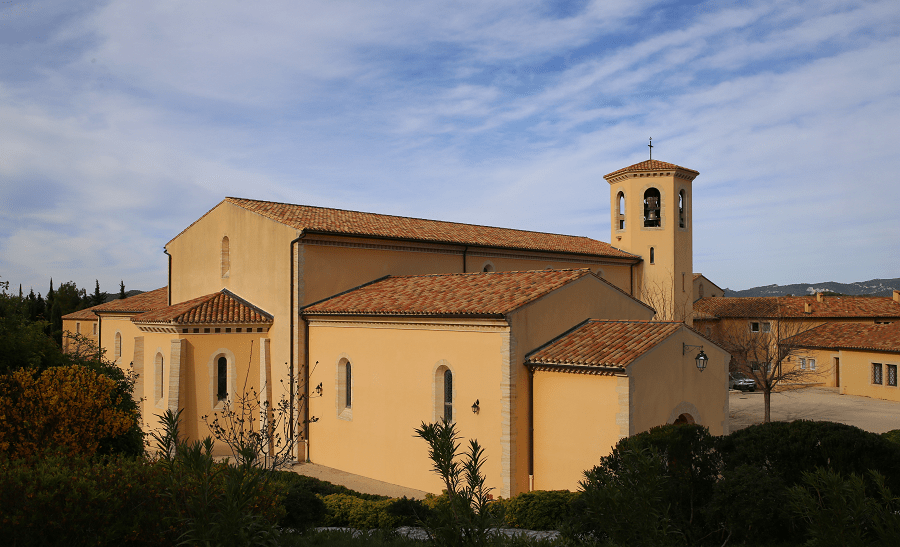The Conciergerie is a former courthouse and prison in the 1st arrondissement of Paris (France), located on the west of the Île de la Cité, below the Palais de Justice. It was originally part of the former royal palace, the Palais de la Cité, which also included the Sainte-Chapelle. Two large medieval halls remain from the royal palace. During the French Revolution, 2,780 prisoners, including Marie-Antoinette, were imprisoned, tried and sentenced at the Conciergerie, then sent to different sites to be executed by the guillotine. It is now a national monument and museum.
History
In the 1st-3rd century AD, the Ile de la Cité became part of the Gallo-Roman city of Lutetia, on the opposite bank of the Seine. The island was surrounded by a wall, and a fortress of the Roman governor was built at the west end of the island. The Merovingian king Clovis installed his capital there, on the site of the Roman fortress. from 508 until his death in 511. The Carolingian monarchs moved their capital out of the city, but at the end of the 10th century, under Hugh Capet, Paris became the capital of the Kingdom of the Franks. He constructed a large new fortified residence, the Palais de la Cité, on the same site.
From the 11th to the 14th century, the palace was enlarged and embellished, and gained in importance in the administration of the Kingdom. Before he departed on the Crusades, Philip II of France delegated his legal authority the Curia Regis, which had regular assemblies, called Parlements, in the Hall of the King, to dispense justice. He moved the royal archives to the building, giving it even greater importance, and named a Concierge, or custodian, to oversee the administration of the palace, which gave the building its name.
Under Charles V (1364–80), the role of the building changed. He decided to move his residence to the Louvre Palace. The concierge of the old palace was given greater authority over lower and middle courts. Prison cells were gradually added to the lower parts of the building, and it became known as the “Conciergerie”. Its prisoners were a mixture of common criminals and political prisoners.
Without the king as a permanent resident, the buildings underwent many changes to fit its judicial and prison role. Louis XII had the Chamber des Comptes reconstructed, and redecorated the Grand Chamber, used by the Parliament of Paris. A flood of the Seine in the winter of 1689-1690 caused important damage to the lower building, while a fire in 1737 destroyed the Chamber des Comptes. It was rebuilt by Jacques Gabriel.
After the Restoration of the Bourbons in 1814 (and again in 1815), after the Hundred Days reign of Napoleon Bonaparte, the Conciergerie returned to its role as a courthouse and prison.
Architecture
The four medieval towers of the north facade, along the Quai de l’Horloge between the Cour de Cassation and the Boulevard du Palais, are the most prominent exterior vestiges of the old Conciergerie.
The Tour Bonbec is a circular tower with battlements and a conical slate roof located at the west end of the Conciergerie, next to the Cour de Cassation. It is the oldest of the towers, constructed in the 13th century under Louis IX. It was originally one level shorter than the other towers, but in the 19th century, under Napoleon III, it was raised to its present height and form.
The gateway on the north is flanked by two circular towers with conical roofs, but without battlements. The Caesar Tower, on the left facing the building, is named in honor of the Roman Emperors, particularly Julius Caesar who visited the island during the Gallic Wars to meet with the leaders of the Gallic tribes, and the later Emperors and Roman governors who lived on the island. The two towers were constructed in the early 14th century by Philippe IV. Later in the 14th century, the lower portions of the towers were connected to the prison of the Conciergerie, and were used as dungeons until the French Revolution. The Silver Tower on the right was used to store part of the royal treasury.
The most recent tower is the Tour de l’Horloge, or clock tower, at the corner of the Boulevard du Palais and the Quai de l’Horloge. It was completed by Jean II of France, and finished in 1350.
Address: 2 Bd du Palais, 75001 Paris, France.
Working Hours:
Thursday 9:30 AM–6 PM
Friday 9:30 AM–6 PM
Saturday 9:30 AM–6 PM
Sunday 9:30 AM–6 PM
Monday 9:30 AM–6 PM
Tuesday 9:30 AM–6 PM
Wednesday 9:30 AM–6 PM
Phone: +33 1 53 40 60 80
Architectural styles: Gothic architecture, Gothic Revival architecture.
See more:














